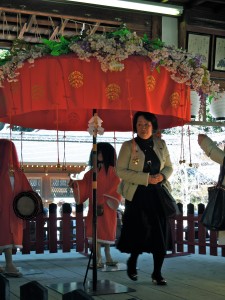
Circling beneath the red umbrella brings protection from disease
A plague on you cherry blossoms!
That’s evidently what some Heian-era folk thought, for when a bout of plague hit Kyoto just over 1000 years ago, they thought it must be caused by the falling cherry blossom. So to pacify the ekishin, kami of pestilence, they started a festival for its entertainment. It’s still going today, and is known as Yasurai matsuri.
In fact there’s a whole group of festivals at cherry blossom time to do with warding off pestilence, known as gechinsai. Kyoto’s version centres on Imamiya Jinja, where on the second Sunday of April processions from two other places converge at the shrine to perform for the kami. The main feature is the dance of the demons.
The procession features large red umbrellas, or canopies. It’s said that if you get under one, you will be safe from disease for the coming year, so onlookers take advantage of the occasion to stand underneath. A large red umbrella is put up at the shrine too, with people circling underneath before paying respects at a temporary shrine.
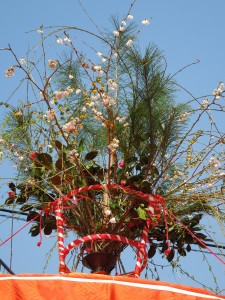
Five spring branches atop the canopy
On top of the processional canopy is a bundle of five different spring branches – willow; pine; cherry; camelia; mountain rose (yamabuki). The idea behind this apparently is that the kami is thought to be distracted by the cherry blossom and wanders off, infatuated by their beauty. It thus fails to protect the locals. The flowering spring branches draw it to the procession and lead it back to the shrine. They act therefore as a kind of shamanistic vehicle (yorishiro) for drawing down the spirit.
Back at the shrine, the kami is entertained by young demons with red and black wigs dancing with drums. This pleases the kami, which is filled with benevolence towards the neighbourhood. In this way it agrees to protect and watch over the locals for the coming year.
As part of the festival the shrine provides bright red hitogata (paper effigy), which act as a substitute for a particular person. You write the name of a person you want to be in good health, then give it to the shrine to be prayed over while retaining the slip in the middle. This is placed at the entrance to the person’s house, ensuring protection from disease.
According to Paul Carty, Kyoto scholar, the Yasurai festival launches an annual cycle of anti-plague festivals that runs from cherry blossom time through the summertime Gion Festival and ends with the Kurama Fire Festival on Oct. 22. The season of disease thus runs from spring to autumn through the hottest time of year. Presumably in winter it’s too cold for the germs.
Imamiya shrine parishioners are keen to point out their festival is the oldest in Kyoto, though it’s generally said that the honour belongs to the Aoi Matsuri. True or not, for 1000 years people have been carrying out the Yasurai Festival in cherry blossom time, and you have to say that those centuries of persistence have paid off. Not much sign of the plague or pestilence these days!
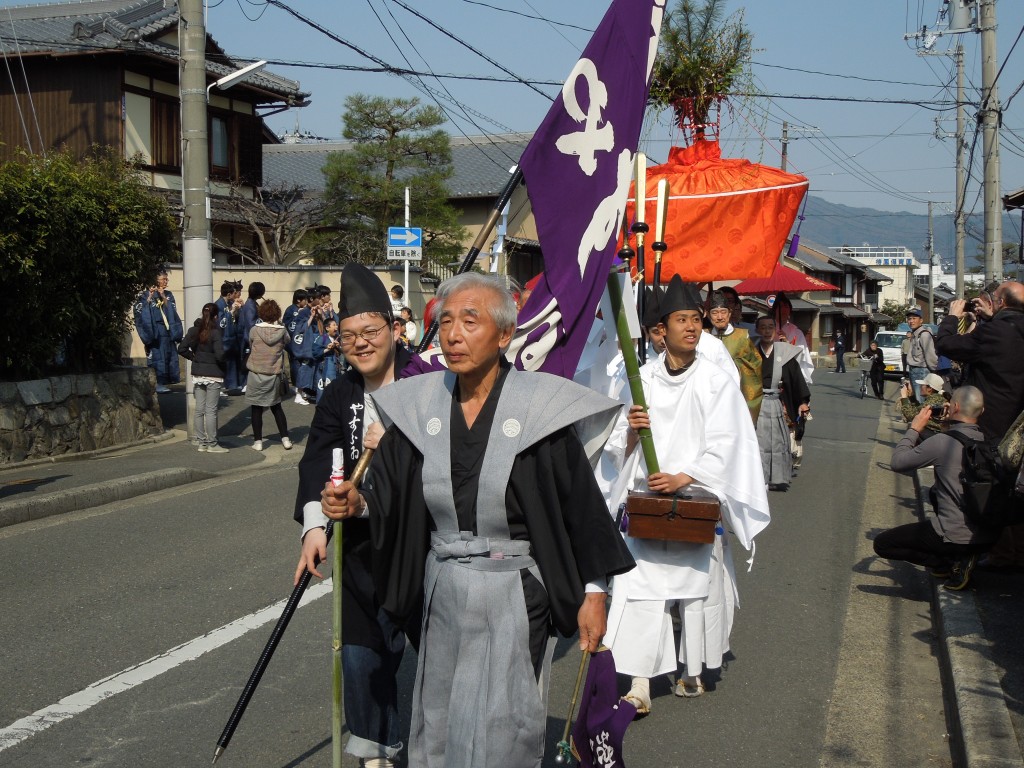
Procession heading towards Imamiya Shrine
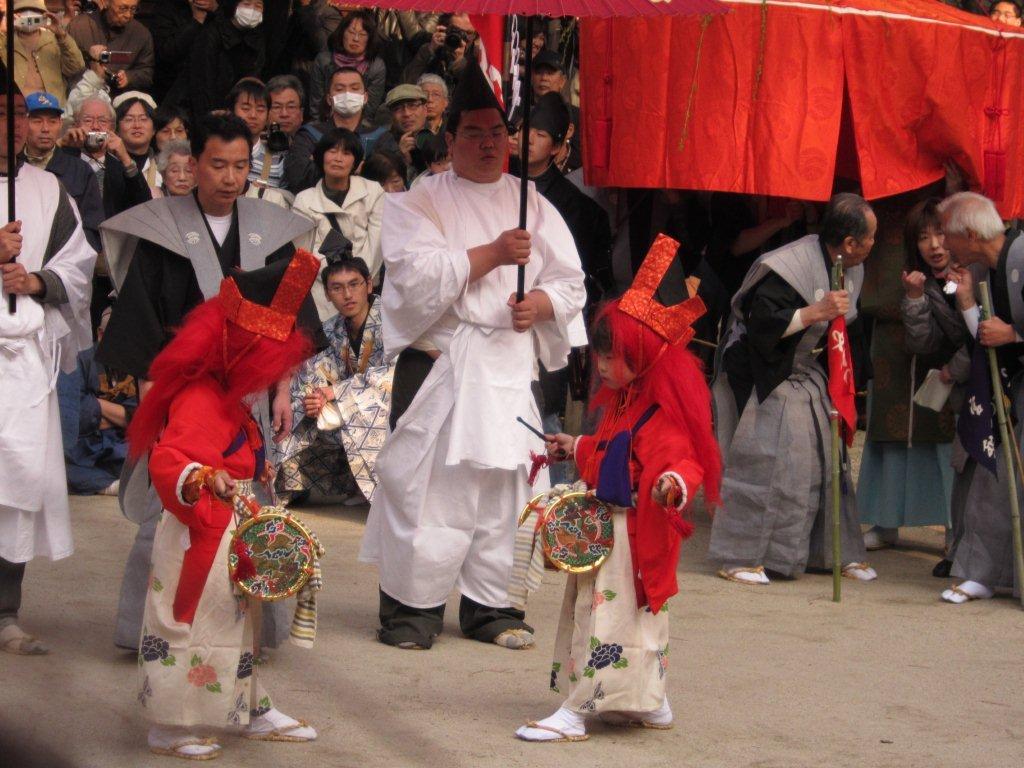
Demons getting down to some serious dancing and drumming
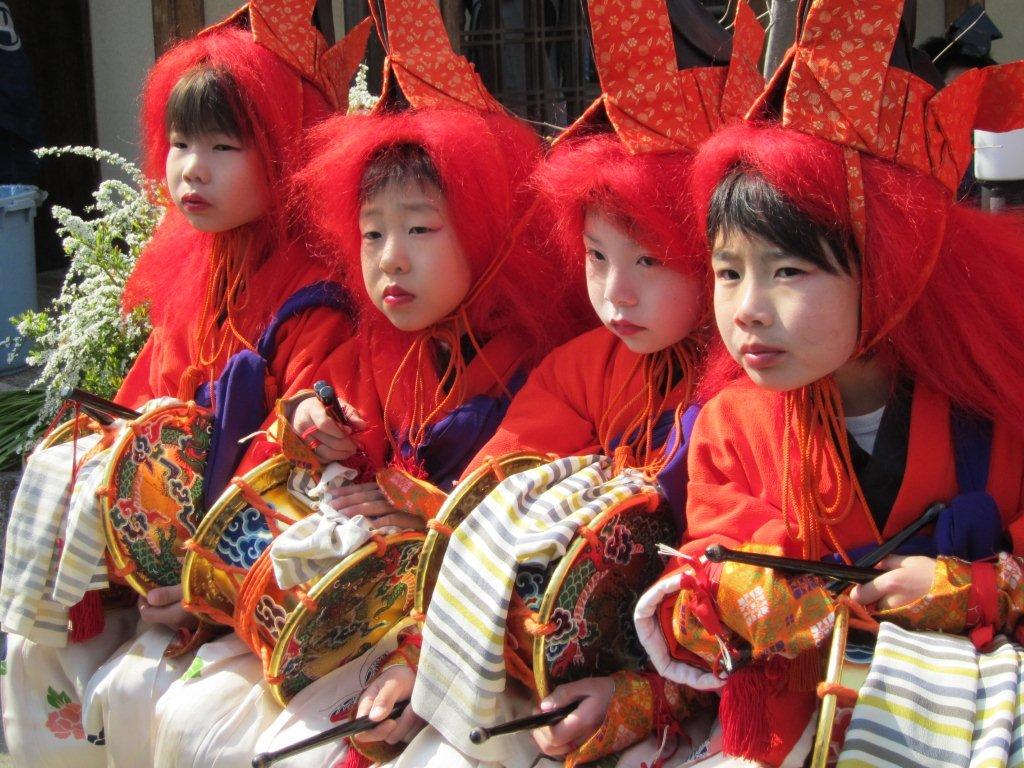
Demons watching demons
***********************************************************************
For more pictures and videos of the dance performance, click here.

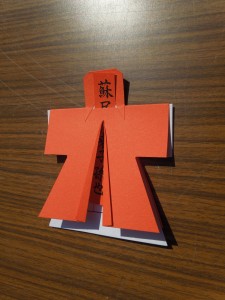
Leave a Reply